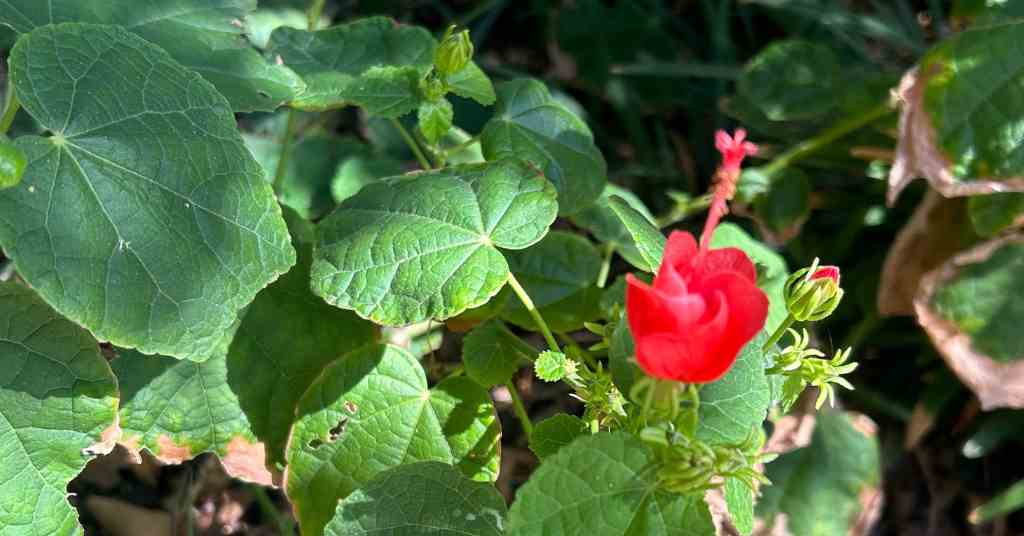The products below contain affiliate links. This means I may earn a small commission if you make a qualifying purchase through my link. This does not affect consumer costs.
Turk’s Cap, also known as Drummond wax mallow. It’s one of my favorite plants to grow in the garden. Turk’s cap is a hardy perennial native to Texas. Best of all, Turk cap care is very easy for both experienced and novice gardeners. This plant produces bright red and pink hibiscus-like flowers that attract hummingbirds and butterflies. It is well suited to the Texas climate and can grow under a variety of conditions.
planting
One of the best things about this plant? It can be grown anywhere, in the sun or in the shade. Choose a location that receives full sun or partial shade. Turk’s Cap can tolerate full sun, but prefers some shade, especially during the hottest parts of the day. I plant them along my driveway where they get plenty of sun, but I also have some in the garden where they get sun in the morning and shade in the afternoon. Plants in your driveway will wilt from time to time, but they will spring back quickly with a little water.
Turk’s cap plants are adaptable to a variety of soil types, but prefer well-drained soils. Sandy or loamy soils are ideal.
The best time to plant Turk’s Cap is in spring or fall when temperatures are mild. If planting in the fall, be sure to give the plants enough time to establish a strong root system. I planted them in October, but it was too late and they didn’t sprout until spring.
After the first freeze, Turk’s hat dies until it returns to the ground. I leave the plants and clean them in early spring. Plants begin to grow from the roots in March or April.
Turk’s cap care
Watering: Water regularly during the first growing season to establish a deep and extensive root system. Once established, Turk’s Cap is drought tolerant and requires minimal watering. Mulching: Apply a layer of mulch around the base of your plants to retain moisture and suppress weeds. Keep the mulch several inches away from the stems to prevent rot. Fertilizer: Turk’s Cap usually does not require much fertilizer. If desired, a balanced slow-release fertilizer can be applied in the spring. I prefer to use this water-soluble fertilizer for better flowering. Pruning: Prune in late winter or early spring to remove dead or damaged wood and shape the plant. Light pruning throughout the growing season will encourage bushier growth and more flowers.
pests and problems
Turkcap is relatively pest resistant. However, be careful of aphids, spider mites, and caterpillars. Treat infestations with insecticidal soap or neem oil if necessary.

Benefits of Turks Cap
Attracts wildlife: Bright red flowers attract hummingbirds, butterflies, and other pollinators. Low Maintenance: Once established, Turk’s Caps are low maintenance and drought tolerant. Ornamental Value: This plant’s attractive flowers and foliage add visual interest to gardens and landscapes.
Turks Cap – Conclusion
We hope you enjoyed today’s article on Turk’s Cap Plant Care. Let us know how you use Turk’s Cap in your garden. Happy gardening!
Related articles
Propagation of Turkscap: a guide to growing plants from cuttings





